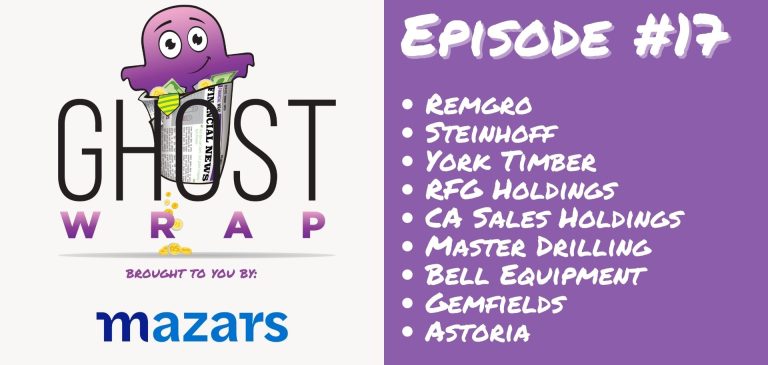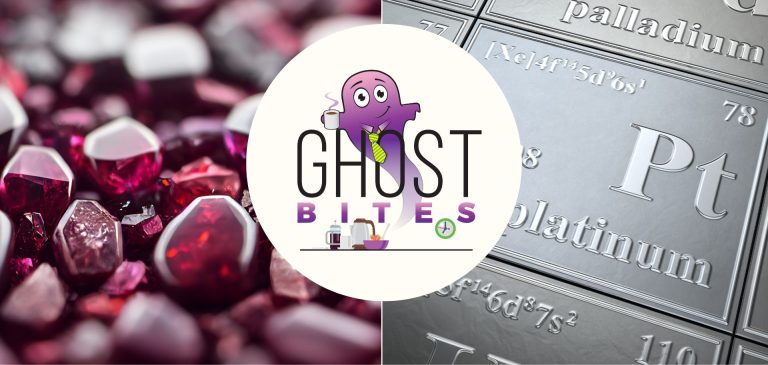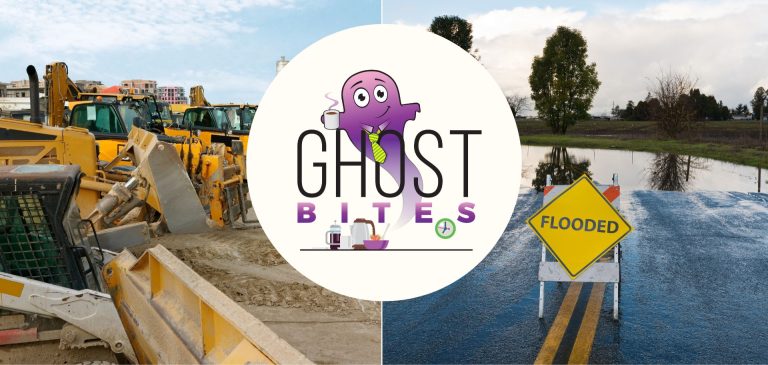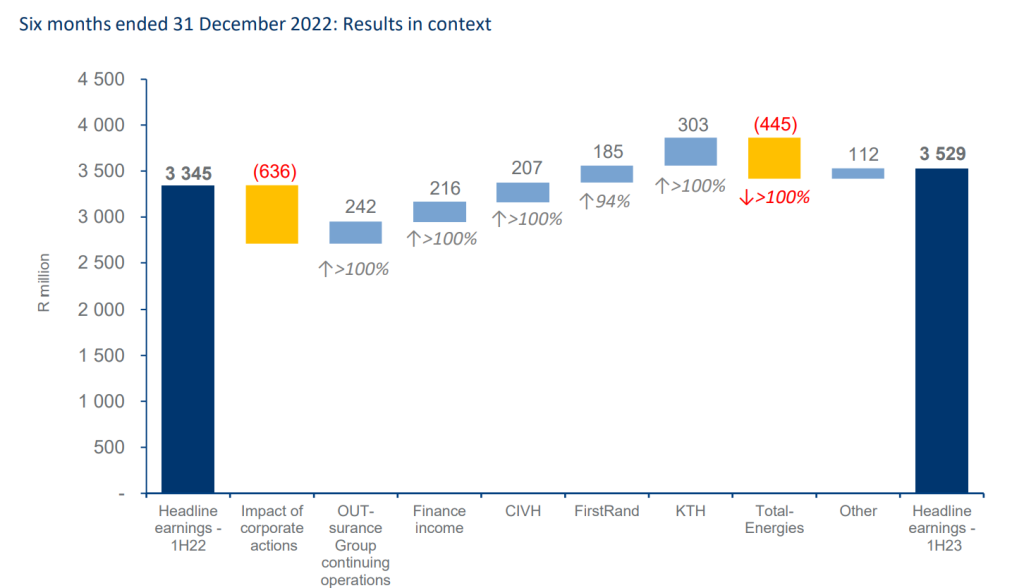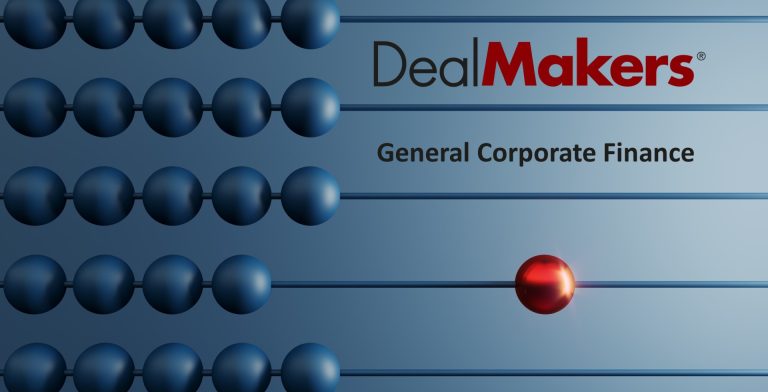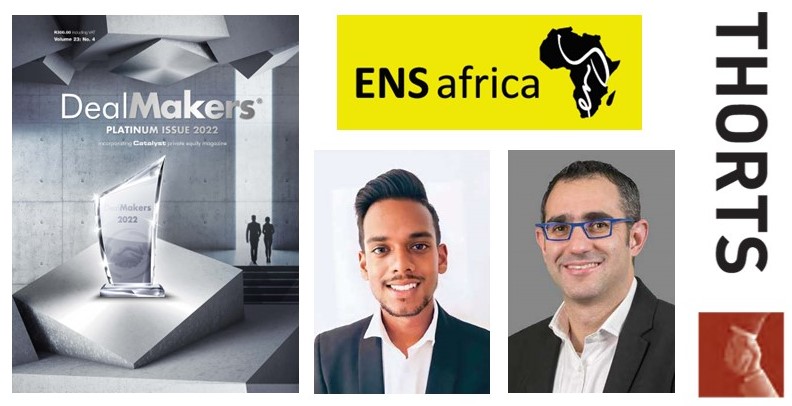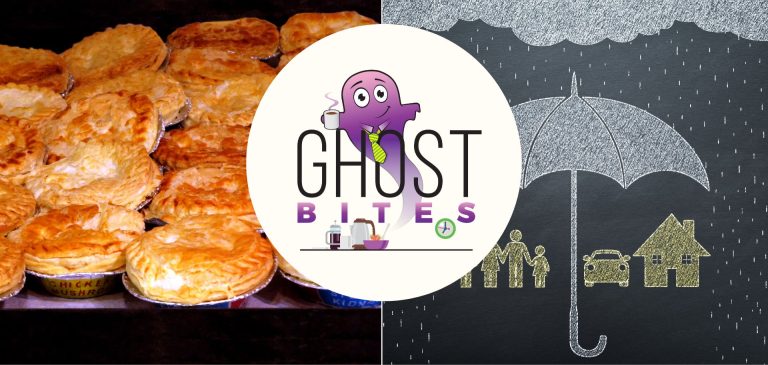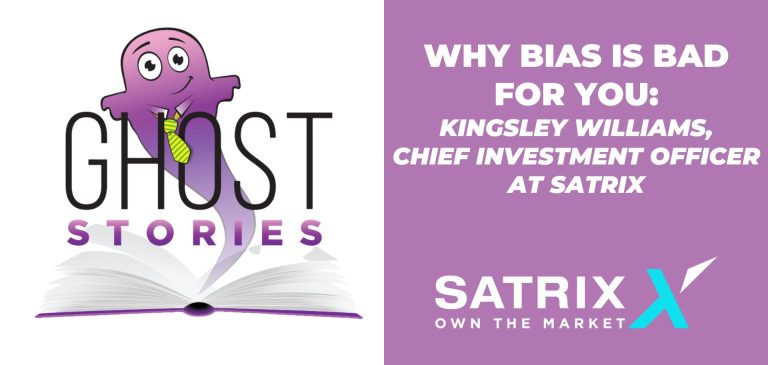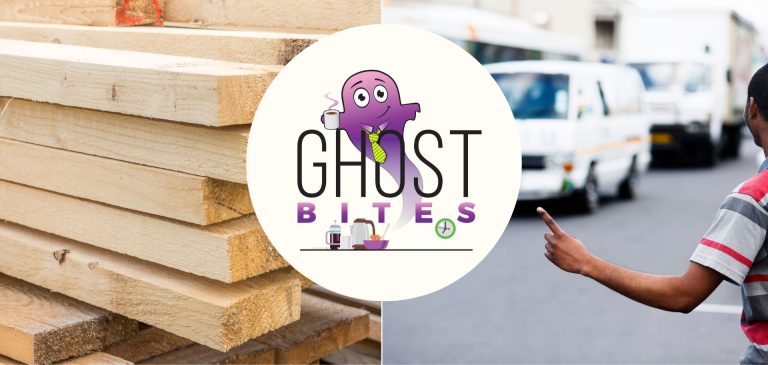A great story at Astoria (JSE: ARA)
A 15.4% rally in a single day is always a pretty thing
Astoria is an investment holding company that is focused on growing its net asset value over time. The current management team of well-known investors took over in December 2020 and they have done a solid job of growing the NAV ever since. The overall gain in NAV under their watch is just under 130%.
Looking at recent performance, between December 2021 and December 2022 the NAV per share grew by nearly 42%.
Half the trick here is that Astoria’s portfolio includes a number of companies that you can’t get anywhere else. This helps reduce the discount to NAV, as investors hate pyramid structures that feature one listed company holding most of its exposure in other listed companies. This just creates layers of costs and discounting. For reference, see Naspers / Prosus.
For example, 43.2% of the NAV is related to Outdoor Investment Holdings, a niche retailer that has performed very nicely in South Africa. 14% of the NAV is in gaming business Goldrush (through RAC preference shares – admittedly a listed instrument), 11.9% is in Marine Diamond Operations, 10.6% is in Trans Hex and 6.5% sits in ISA Carstens, a tertiary education business.
To round off the portfolio, 6.3% is in Vehicle Care Group (a finance house in the used car industry) and 5.6% is in Leatt Corporation, a home-grown hero that trades over-the-counter in the US.
The NAV per share is R14.06 and the share price closed 15.4% higher at R8.25. That’s still a significant discount to NAV.
Bytes inside your Bites (JSE: BYI)
The company released a short and sweet trading update
Bytes Technology Group gave a light-touch update for the year ended February 2023 as a precursor to the release of detailed earnings.
Gross profit and adjusted operating profit will be approximately 20% higher year-on-year. Interestingly, headline earnings presumably isn’t up by 20% or more, as this would’ve triggered a formal trading statement. It would be a little weird if the company issues a trading statement subsequent to a trading update like this. Weird, but not impossible.
Cash conversion improved in the second half of the year. For the full year, cash conversion was 85% and the group had £73 million in cash. Take careful note of that currency.
CA Sales Holdings is a mid-cap worth watching (JSE: CAA)
How does HEPS growth of 31.2% grab you?
There are some companies on the JSE that are criminally overlooked. CA Sales Holdings is a new kid on the block that has registered share price growth of 29% in the past six months. With the release of results for the year ended December, we can clearly see that the performance supports the share price move.
This is a particularly interesting business that operates in the FMCG industry, helping its clients move goods through the retailers and into the hands of consumers. That sounds ridiculous, unless you have experience in this industry. Trust me, it’s not as easy as you think to navigate retail supply chains and store channels.
With revenue growth of 18.2%, the group’s leverage was on fine display with operating profit up by 32.4%. HEPS increased by 31.2% and the dividend increased by 30.4%, so the cash followed the earnings. That’s perhaps the most important thing to look for.
If you want to learn more about this interesting and clearly successful company, register for the upcoming Unlock the Stock event on 30 March. Management will be giving a presentation on the company and will then take your questions. Attendance is free but you must sign up here>>>
Calgro achieved a substantial share buyback (JSE: CGR)
Mopping up this many shares isn’t easy
Liquidity in Calgro’s stock has always been a challenge unfortunately, something that so many JSE-listed companies can relate to. For some reason, Calgro managed to get R15 million worth of share buybacks away between 15 March and 20 March 2023. The price paid was R2.50 and almost all the volume went through on 20 March, presumably after someone in the market with a meaty position saw the bids at that price.
This represents 4.28% of the company’s issued ordinary share capital and Calgro has authority to repurchase up to 20% of its shares. The share price has lost over a third of its value in the past year.
How bad is Nampak’s balance sheet? (JSE: NPK)
So bad that they need to announce the sale of some equipment
You can tell a lot about a company based on the news that it releases over SENS. At Nampak, the balance sheet is broken. This is why the company has excitedly announced a sale of equipment for cash. At this stage, shareholders will be thrilled to see any improvement to the debt.
Having shut down the crate manufacturing business, the corporate equivalent of a garage sale managed to attract a subsidiary of Mpact to swoop in and buy the equipment. This includes injection moulding and recycling equipment amongst other bits and bobs.
The price is R40 million, so this isn’t exactly a bucket of screws. The book value is only R4.5 million, a reminder that the book value of industrial businesses is largely useless as it is measured on an historical cost basis. Nampak will bank a profit of R35.5 million on this sale.
To put that amount in perspective, the group made a loss of R25.7 million in 2022. Perhaps it should become an equipment trading business?
The R40 million is payable over three months based on certain delivery milestones. Of course, Nampak will put that money straight into the interest-bearing debt that is busy choking the company.
Master Drilling confirms a juicy jump in earnings (JSE: MDI)
In the commodities rush, sell shovels (or drills)
Master Drilling has done very nicely since the lows of 2020. Up over 64% in three years, it is quite literally the shovel in the gold rush. As global commodity prices have supported increased investment in mining exploration, Master Drilling has been a beneficiary.
For the year ended December 2022, HEPS is expected to be between 229.50 cents and 248.60 cents. This is between 20.3% and 30.3% higher than the prior year. The company also mentions its USD earnings, which will be between 8.2% and 18.2% higher. Of course, the rand range looks better because the rand has lost ground over this time.
The share price closed 3.4% higher at R13.90. This is trailing Price/Earnings multiple of 5.8x at the midpoint of the earnings range.
Yes, OUTsurance shareholders get something out (JSE: OUT)
You need to read these numbers carefully
I’m not usually one for normalised numbers, but there’s little choice here. The base period for OUTsurance Group was literally a completely different business. It included Hastings, Discovery and Momentum Metropolitan when the listed company was called Rand Merchant Investment Holdings.
Those businesses are now out of the system, so investors can invest in an entity that is almost entirely comprised of OUTsurance’s insurance businesses. There’s still some legacy stuff in there as well, but it’s minor.
Normalised earnings from continuing operations jumped by 77.7%, driven by gross written premium growth of 17.4%. It’s certainly worth highlighting a strong performance in Australian business Youi, a rare example of South Africans getting it right in Australia.
Insurance is volatile of course, as that’s exactly why people have insurance in the first place. A lower claims ratio was a driver of performance in this period. Steps taken to offset inflationary impacts of claims include higher excesses on power surge and dip claims (thanks Eskom) and pro-active price increases in premiums.
Normalised ROE increased from 23.6% to 29.1%. This shows just how lucrative this industry is.
In major strategic news, the group is looking to expand to the Republic of Ireland. The business interests in Namibia were disposed of. Guinness beats Windhoek, I guess.
An interim dividend of 56.8 cents per share was declared and the share price closed at R33.83.
RFG Holdings seems to be coping with inflation (JSE: RFG)
The focus is on financial performance, not winning market share
This is a wonderful way to learn about price elasticity of demand, which is the way that volumes respond to a change in price. What a company should be doing is trying to find the optimal balance that generates maximum profits. In practice, companies sometimes absorb the pain in their margins just to grow or even maintain market share.
Not so at RFG Holdings, where revenue increased by 7.4% in the 21 weeks ended 26 February 2023 and price inflation was 14.7%. This means that volumes fell sharply, with group volumes down by 11%. The numbers don’t balance because of the Today acquisition which wouldn’t be included in like-for-like numbers.
In terms of market share, the company notes that the volume declines are largely in line with the market movements in those categories. In other words, consumers are buying less from everyone because of pricing pressures.
To make ourselves feel better, we seem to be eating pies. Lots of pies. RFG highlights the pie category as a winner in this period, with a turnaround in the Today business to sweeten the outcome, or perhaps to make it more savoury?
Like all of us, RFG is hoping for a reduction in load shedding. The diesel cost is currently R2 million per week.
Overall, the group seems to be coping with inflation, although packaging (cans and paper) and meat costs are continuing to cause pressure. Despite this, the share price has taken a dive of over 30% this year.
Transaction Capital shareholder movements (JSE: TCP)
The market is desperate for signals at the moment
After the capitulation of the Transaction Capital share price, the market is watching every bit of news very closely. Traders and general punters are looking for institutional investors and insiders buying the shares, as this is a sign that perhaps things will be ok.
For that reason, I’ve included these trades in the main section of Ghost Bites and repeated them in the director dealings section for those who refer back to Little Bites and might miss this news otherwise.
Coronation Asset Management has bought more shares, taking its stake from 14.41% to 16.57%. This is helpful, but the market doesn’t pay too much attention to asset managers making small changes.
Insiders give the real clue to what might be going on. There were two such examples on Wednesday, with a non-executive director (Diane Radley) buying nearly R1.2 million in shares and none other than Chris Seabrooke (through Sabvest Capital) mopping up R5.4 million shares.
Now, when Sabvest buys shares, the market pays attention. The purchase price was around R10.80 per share.
Transaction Capital closed 9.8% higher at R11.69. The rollercoaster continues.
Little Bites:
- Director dealings:
- There was an absolute banger of a director purchase of shares at Curro (JSE: COH), sending the share price 5.6% higher. Piet Mouton bought R19 million worth of shares.
- As noted above, non-executive directors of Transaction Capital (JSE: TCP) bought shares worth R6.6 million, including Sabvest Capital (JSE: SBP – linked to Chris Seabrooke) buying R5.4 million.
- Des de Beer is back at it, buying R386k worth of shares in Lighthouse Properties (JSE: LTE).
- A director of Kaap Agri (JSE: KAL) bought shares worth R120k.
- An associate of the CEO of Invicta Holdings (JSE: IVT) has bought shares worth R111k. There’s been quite a bit of insider buying at Invicta – something to take note of?
- Although the results aren’t out on SENS yet, news reports suggested that the Steinhoff (JSE: SNH) shareholders rejected the restructuring plan. I maintain that the equity is worthless, yet it still changed hands at R0.30 on Wednesday. The end is surely nigh.
- Perhaps I wasn’t blind on Tuesday when I couldn’t find the Rebosis (JSE: REA) business plan. They released a subsequent SENS announcement with the link and I can now see it right at the top of the page at this link.
- It seems like there was an unexpected resignation at Metair (JSE: MTA), with CEO Riaz Haffejee stepping down with effect from 31 March. That doesn’t leave any time at all for a handover and he was only there for roughly two years. The current CFO, Sjoerd Douwenga, will take over as interim CEO. There has been an internal promotion to the interim CFO position.
- There have been significant changes to the executive management team of Grindrod Shipping (JSE GSH), with the founder and CEO of Taylor Maritime also taking the role of CEO of Grindrod Shipping.
- Mr Mvuleni Geoffrey Qhena, former CEO of the IDC, has joined the board of Telkom (JSE: TKG) as its Chairperson.
- Europa Metals (JSE: EUZ) has announced that the initial budget for drilling has been agreed with its joint venture partner in the Toral Project in Spain. $1.8 million will be spent over a 12-month period.
- Randgold & Exploration Company (JSE: RNG) issued a further trading statement that tightens the earnings range. The headline loss per share will be between 80.26% and 90.26% worse. This is to be expected in a junior mining company.
- Choppies Enterprises (JSE: CHP) renewed its cautionary announcement regarding the potential acquisition of up to a 100% stake in a Botswana-based FMCG business.

